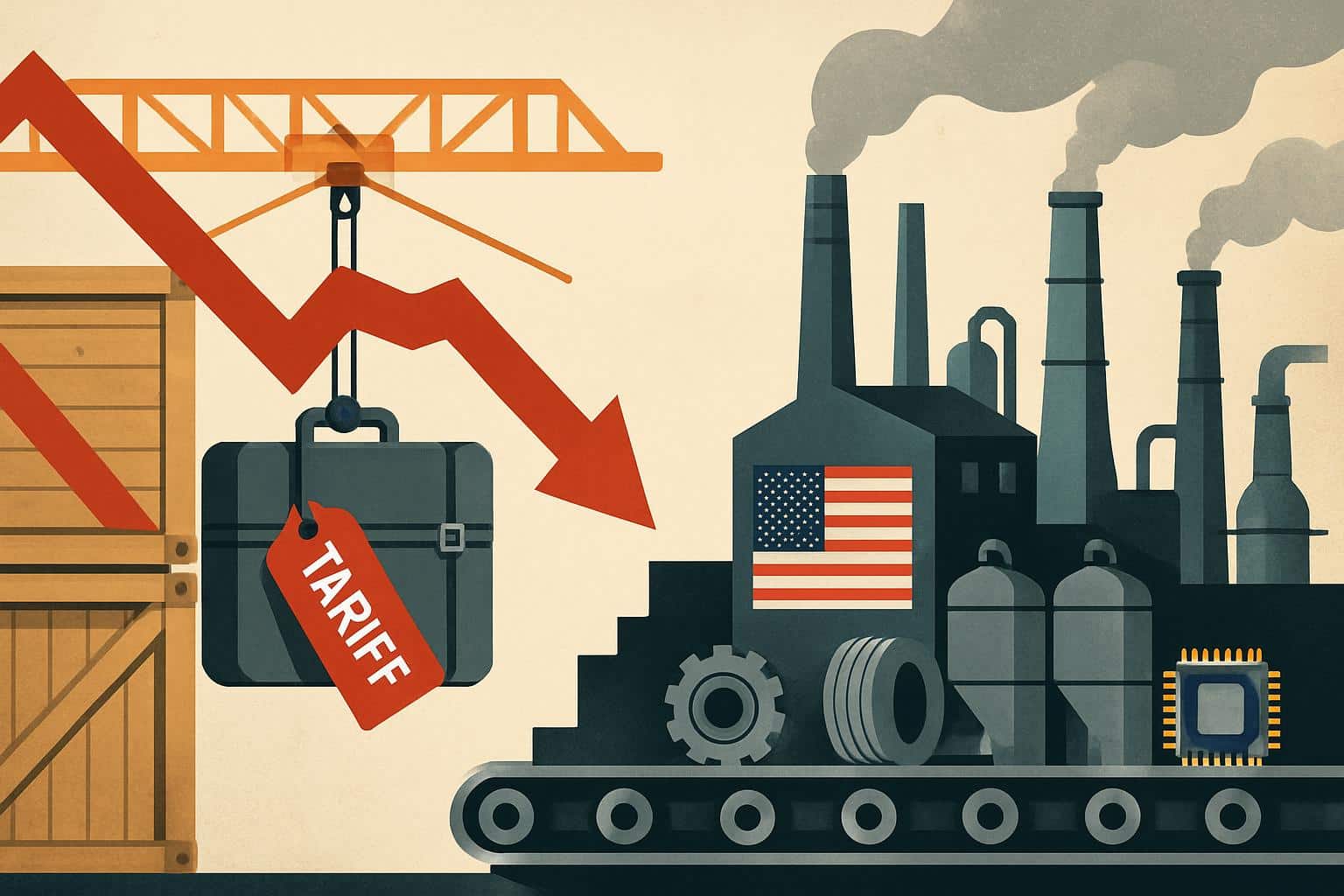Donald Trump’s sweeping tariffs aim to throw the playing field in favor of domestic producers. The policy is also revealing the most difficult part of bringing back factories: As imports turn pricier, so, too, do the very components many American factories depend on, and the promised hiring wave collides with real-world limitations around skills, costs and capacity.
What the tariffs are meant to do — and whom they hit
The new duties, which were described by manufacturers as ranging from around 10 percent to 50 percent on most imports, are intended to dull foreign competition and coax production onshore. That logic can apply in narrowly protected sectors. Yet modern manufacturing is deeply globalized: The same tariffs that protect final goods are levied on the inputs they contain, too, including specialty steel, ball bearings, industrial chemicals, fabrics, semiconductors and machine tools.

History offers a caution. Studies of earlier rounds of trade actions yielded uncertain findings: a Federal Reserve study of appliance tariffs found that consumers saw steep price increases; economists who analyzed customs and price data found that the costs of tariffs were passed broadly on to US buyers, with few offsetting gains. In other words, protecting an industry can command some capacity, but it also drives costs up and down the supply chain.
Early hints from the factory floor
Lead indicators show a more challenging operating environment head. The manufacturing purchasing managers’ index has teetered around contraction territory and Federal Reserve regional surveys have reported deteriorating margins as input costs rise. In one survey conducted by the Dallas Fed, an overwhelming majority of respondents said that tariffs were dragging on their businesses, by leading to higher costs for materials and pricing pressures.
Payrolls data tell a similar story: Manufacturing employment, which rebounded after the pandemic, is slipping back, with net job loses evident from the latest tallies from the Bureau of Labor Statistics. Factory construction is still high thanks to previous subsidies for chips, batteries, and clean energy, but headcount is proving harder to scale when orders are choppy and bills for materials are rising.
Costs, prices and the small-firm squeeze
Big companies often hedge currencies, negotiate multi-year contracts or move sourcing across borders. But smaller manufacturers are less able to afford such measures. Maker of apparel and home goods in New England, precision shops in the Midwest, specialty equipment builders on the West Coast all report double digits increase in input costs growing out of tariff lines on textiles, metals and parts. One Massachusetts bedding maker has raised a red flag over six-figure monthly tariff bills on imported cotton fabric and down, prompting cuts to marketing and capital expenses. A nearby motorcycle-leather maker says tariffs have raised its cost base by around 15%, crimping cash flow for hiring and new machines.
Those pressures rarely stay in-house. Industry surveys have shown that more companies are considering raising selling prices or adding surcharges to protect margins. The pass-through is uneven — niche products with loyal customers can soak it up, but high-volume, price-sensitive categories face lost sales and delayed investment.

Jobs vs. announcements: the reshoring reality
The surge in factory announcements has taken place amid incentives for semiconductors and clean energy in the United States over the past two years. But promises don’t necessarily translate into jobs on the ground. Less than a tenth of all Americans work in manufacturing, and productivity gains make new facilities less labor-intensive than the legacy plants they tend to replace.
Tariffs alone aren’t going to solve bottlenecks in workforce readiness. Employers everywhere keep talking about having a shortage of machinists and welders and industrial maintenance technicians. Some owners say more restrictive immigration laws are exacerbating the labor shortage, preventing them from bidding for more work even as customers ask about making more products in the United States to avoid import duties.
Downstream risk and the export question
That adds up, companies argue — and opens them as well to retaliatory penalties from trading partners that have been joining efforts to challenge or even potentially roll back tariffs over steel and aluminum, which the United States has already imposed, and over punitive tariffs concerning Boeing jets and the subsidies the company has received. That can discourage capital spending and undercut competitiveness overseas if trading partners hit back. The Peterson Institute for International Economics and other research organizations have chronicled how tit-for-tat tariffs in the past eras depressed American exports in the targeted categories, even when domestic supply was available.
Exchange rates matter, too. A stronger dollar can offset the protective effects of tariffs by pricing US exports higher overseas and reducing import costs for inputs — a seesawing that is at times in conflict with the terms of a particular sector and deal structure but undermines the intended rebound.
What would make the policy effective
To undergird a sustainable revival, tariffs need three things to line up: predictable rules, supplies at an affordable price and a pipeline of skilled labor. Transparent waiver procedures and deadline-bound reviews may help to contain collateral damage for the input sensitive factories. “If the demand holds, targeted training — especially for jobs in CNC machining, industrial automation and maintenance — would assist firms in staffing back up,” he said. It is vital to synchronize tariffs with supply-side investments, not stack uncertainty on top of scarcity.
Only a few metrics are being watched closely by executives: the new-orders indexes of purchasing manager surveys, orders for core capital goods, capacity utilization in durable goods and the pace of announced projects moving from groundbreaking to production. If that happens while input-cost inflation eases, the argument for a lasting rebound will only grow. If not, the tariffs could end up working as a sort of broad tax on making things in America, undermining the very revival they are supposed to bring.

